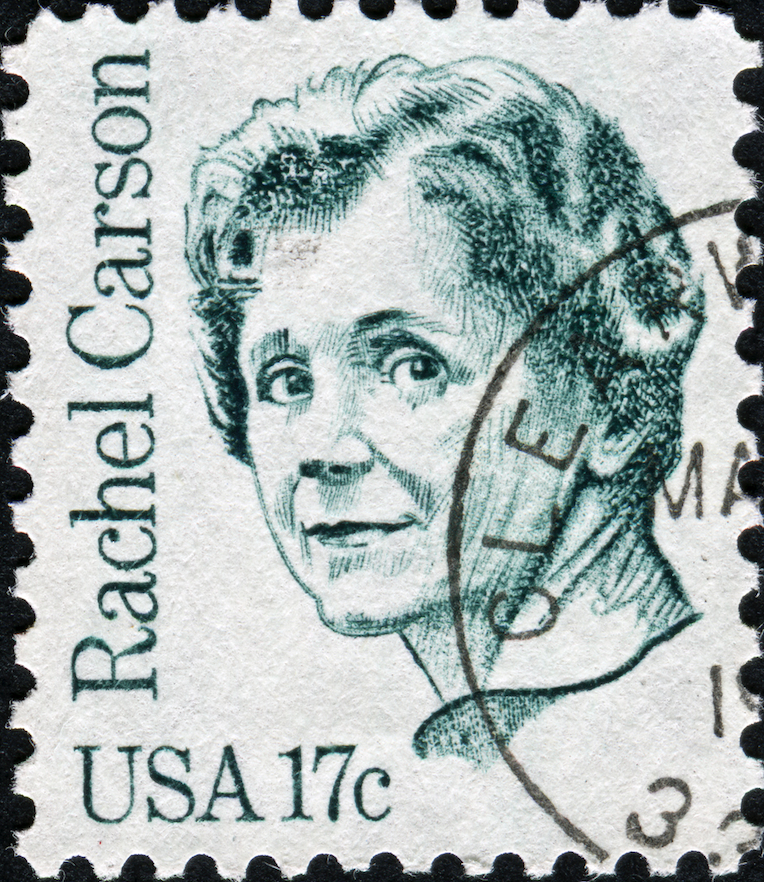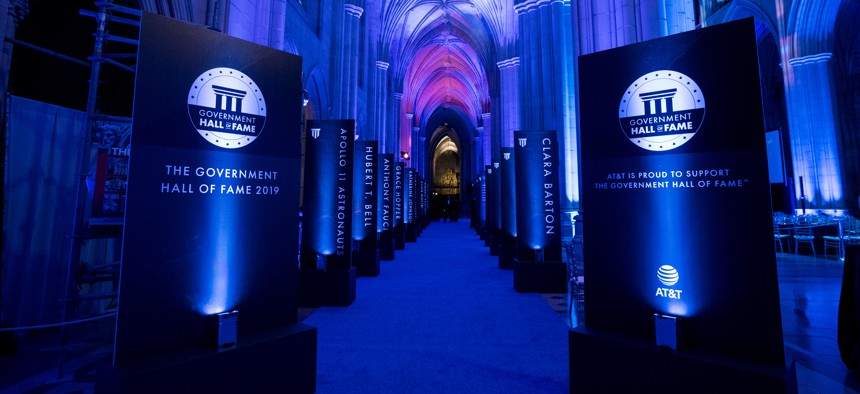Introducing the Government Hall of Fame Class of 2021
From the first career civil servant to the head of the Smithsonian, it’s an exemplary group.
In 2019, Government Executive launched the Government Hall of Fame with a singular purpose: to provide the kind of recognition for government’s all-time greats that luminaries in other fields have long received. With all of the challenges that the federal government has had to take on since then, it’s more important than ever to honor those who have demonstrated sustained achievement and unparalleled dedication to public service throughout their careers.
Today, we’re announcing the Class of 2021 of the Hall of Fame. Its members include the first Treasury Secretary, the first career civil servant, a hugely important environmentalist and the current head of the Smithsonian Institution. All of the inductees will be honored at a virtual Hall of Fame broadcast on Oct. 21.
Register for the Hall of Fame broadcast
Later this week, we’ll announce the winners of this year’s Theodore Roosevelt Government Leadership Awards, which honor an annual all-star team of top federal performers. A series of broadcasts highlighting the Teddy winners will follow starting Oct. 25. Sign up now to get updates on the proceedings.
In the meantime, here are the distinguished members of the Government Hall of Fame Class of 2021:
Lonnie Bunch III
As secretary of the Smithsonian Institution, Bunch oversees 19 museums, 21 libraries, the National Zoo and numerous other research and educational units. He was previously director of the Smithsonian’s National Museum of African American History and Culture, which he took from an idea to a well-respected and highly popular destination. Earlier in his career, Bunch, who has won numerous prizes and honors for his work, also served in multiple positions at the Smithsonian’s National Museum of American History, including associate director for curatorial affairs.
Rachel Carson
Carson, whose writing in Silent Spring and other books inspired the modern environmental movement, got her start as a biologist and writer with a part-time position at the U.S. Bureau of Fisheries (later the Fish and Wildlife Service) in 1935. A year later, she was appointed a junior aquatic biologist, one of only two women in professional positions at the agency. She rose through the ranks, eventually shifting to oversee all FWS publications as editor in chief, before leaving the agency in 1952 to focus full time on writing. Her work was a major factor in the creation of the Environmental Protection Agency.

Virginia Hall
Hall was a super-spy during World War II, first with the United Kingdom’s Special Operations Executive and later with the American Office of Strategic Services—despite losing her left leg below the knee in an accident before the war. In 1941, she traveled to occupied France, where she helped lead a daring raid on a German prison in which 12 agents escaped. She returned to France in 1944 as an OSS agent, disguising herself as an elderly woman to cover up the fact that she had a limp due to her wooden leg. Hall then worked to organize resistance forces in France to support the Allied invasion on D-Day. She won the Distinguished Service Cross in 1945, the only one awarded to a civilian woman for service in the war.
Alexander Hamilton
In 1776, Hamilton, a native of the British West Indies, was commissioned a captain in the Continental Army. He advanced to serve on George Washington’s staff, where he played a key role in organizing and gaining funding for the army. After the war, Hamilton advocated for a strong central government, writing more than two thirds of the essays in The Federalist defending the Constitution. He put his ideas into action as Washington’s Treasury secretary, helping to ensure the long-term viability of the United States government and laying the foundation for the American administrative state.

John Koskinen
In late 2013, Koskinen was confirmed as Commissioner of Internal Revenue, capping a lengthy career in public service. That career included stints as deputy director for management at the Office of Management and Budget, non-executive chairman of Freddie Mac, and deputy mayor of the District of Columbia. Near the turn of the millennium, he headed the President’s Council on Year 2000 Conversion, ensuring that federal systems were upgraded in a timely fashion.
Charles Lyman
During the Civil War, Lyman fought for the Union Army at Antietam, Fredericksburg and Chancellorsville. He then took a job as a clerk in the Treasury Department, and later advanced to appointments as a civil service examiner and then chief examiner. Thus, during the era of the spoils system, Lyman could lay claim to being the first career civil servant. In 1886, he was named to the Civil Service Commission, and three years later became its president.
Patsy Mink
In 1964, Mink, after having served in the government of Hawaii, ran for a seat in the U.S. House. When she won her race, she became the first woman of color and first Asian-American woman elected to Congress. She eventually served 12 terms in the House, spearheading such legislation as the Title IX amendment to the Higher Education Act. Mink was assistant secretary of State for oceans and international environmental and scientific affairs from 1977 to 1978.
Ellen Ochoa
Beginning with her work on optical systems for information processing at the NASA Ames Research Center in 1988, Ochoa steadily took on bigger and bigger challenges, becoming an astronaut and eventually director of the Johnson Space Center in Houston. In 1993, she became the first Hispanic woman to go to space, aboard the shuttle Discovery. She went on three more shuttle missions, spending a total of nearly 1,000 hours in space. She has received NASA’s highest honor, the Distinguished Service Medal.
Linda Thomas-Greenfield
A career Foreign Service officer, Thomas-Greenfield serves as U.S. ambassador to the United Nations. She joined the Foreign Service in 1982. From 2013 to 2017, she was assistant secretary of State for the Bureau of African Affairs. Prior to that, Thomas-Greenfield was director general of the Foreign Service, managing personnel operations for the State Department’s 70,000 employees. She served as ambassador to Liberia from 2008 to 2012, and her other overseas postings include stints in Switzerland, Pakistan, Kenya, The Gambia, Nigeria and Jamaica.
Harriet Tubman
Tubman’s service to the Union Army during the Civil War included cooking, washing clothes and working as a nurse. In 1863, she became the first woman to organize and lead a U.S. military operation, working closely with military officers to lead a unit of 150 Black soldiers in a daring raid up the Combahee River in South Carolina. The operation was phenomenally successful: About 750 people were freed, roughly 10 times the number that Tubman escorted to freedom on the Underground Railroad. Tubman spent the next three decades fighting to receive a federal pension for her work.

James Webb
Webb served as administrator of NASA from 1961 to 1968, leading the agency through the Mercury and Gemini programs during a critical period for the space program in the race to land on the moon. Before that, he served as a Marine in World War II, as head of the Bureau of the Budget and as undersecretary of State, where he led a major reorganization of the department that expanded its influence. In 2002, the Next Generation Space Telescope was renamed in his honor.








